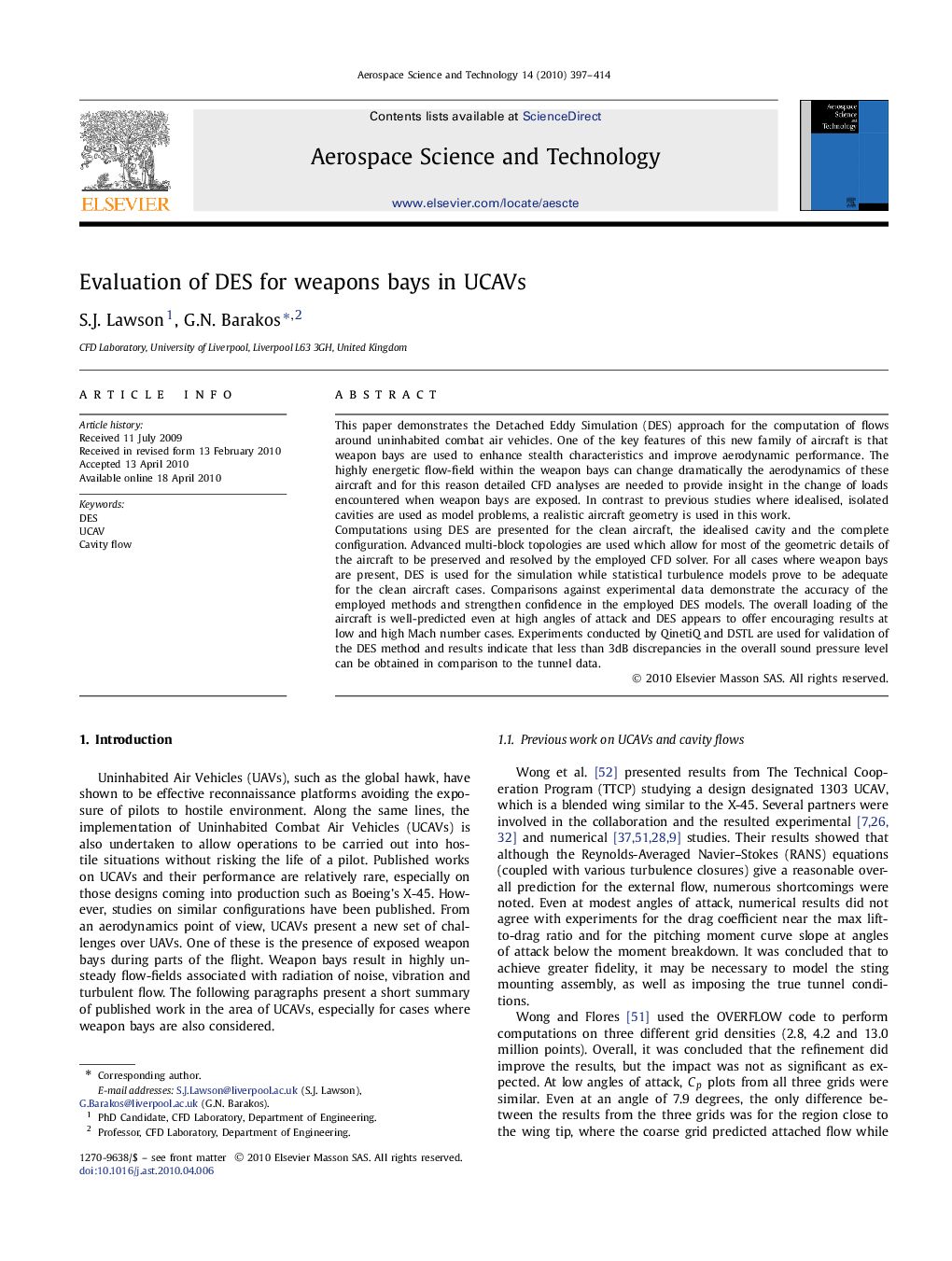| Article ID | Journal | Published Year | Pages | File Type |
|---|---|---|---|---|
| 1718588 | Aerospace Science and Technology | 2010 | 18 Pages |
This paper demonstrates the Detached Eddy Simulation (DES) approach for the computation of flows around uninhabited combat air vehicles. One of the key features of this new family of aircraft is that weapon bays are used to enhance stealth characteristics and improve aerodynamic performance. The highly energetic flow-field within the weapon bays can change dramatically the aerodynamics of these aircraft and for this reason detailed CFD analyses are needed to provide insight in the change of loads encountered when weapon bays are exposed. In contrast to previous studies where idealised, isolated cavities are used as model problems, a realistic aircraft geometry is used in this work.Computations using DES are presented for the clean aircraft, the idealised cavity and the complete configuration. Advanced multi-block topologies are used which allow for most of the geometric details of the aircraft to be preserved and resolved by the employed CFD solver. For all cases where weapon bays are present, DES is used for the simulation while statistical turbulence models prove to be adequate for the clean aircraft cases. Comparisons against experimental data demonstrate the accuracy of the employed methods and strengthen confidence in the employed DES models. The overall loading of the aircraft is well-predicted even at high angles of attack and DES appears to offer encouraging results at low and high Mach number cases. Experiments conducted by QinetiQ and DSTL are used for validation of the DES method and results indicate that less than 3dB discrepancies in the overall sound pressure level can be obtained in comparison to the tunnel data.
